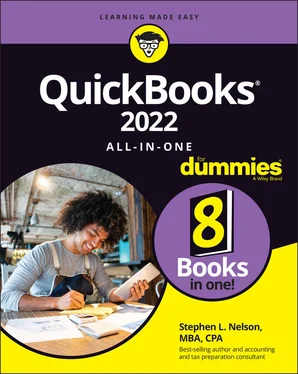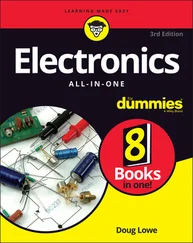If a lender doesn’t provide such an amortization schedule, you can calculate the interest expense yourself by using either a spreadsheet or a calculator. In Microsoft Excel, right-click any worksheet tab, choose Insert from the shortcut menu, and double-click the Amortization Table on the Spreadsheet Solutions tab of the result dialog box. Then, after you’ve calculated the interest expense, you can deduce the principal component by subtracting the interest from the payment amount.
I want to show you one other liability-related journal entry. Very commonly, a business owes money for some goods or services or taxes that must be recorded in the accounting system. If, at the end of an accounting period — say, at the end of the year — you owe $1,200 of interest on some loan, you really need to record that interest expense in your accounting system. You want to record the fact that although the loan balance may show as $10,000 in your accounting records, you probably really owe $11,200, because you owe both the $10,000 of principal and $1,200 of accrued interest.
To accrue a liability, you use a journal entry like the one shown in Table 3-16. This journal entry shows the accrual of $1,200 of interest expense on a loan payable.
TABLE 3-16Journal Entry 16: Accruing a Liability
| Account |
Debit |
Credit |
| Loan interest expense |
$1,200 |
|
| Loan interest payable |
|
$1,200 |
The journal entry shows a $1,200 debit to loan interest expense and a $1,200 credit to loan interest payable. This journal entry records amounts that you owe as of the end of the accounting period that don’t get recorded in some other way.
You need to be careful about using journal entries like the one shown in Table 3-16. Typically, you want to use such journal entries when it’s very important to count all your expenses and to measure all your liabilities accurately.
 One common situation in which you want to be especially careful about making such accruals occurs if you sell your firm. Any prospective purchaser wants to have not only a very good estimate of your true expenses for the accounting period, but also a very accurate estimate of liabilities at the time the business is being evaluated.
One common situation in which you want to be especially careful about making such accruals occurs if you sell your firm. Any prospective purchaser wants to have not only a very good estimate of your true expenses for the accounting period, but also a very accurate estimate of liabilities at the time the business is being evaluated.
Liability accruals like the one shown in Journal Entry 16 present a problem to the accountant or bookkeeper, however. To return to the example of the accrued interest shown in Journal Entry 16, suppose that at a later time, the business makes a $3,000 payment, which includes the interest accrued in Journal Entry 16. When the accountant or bookkeeper later records this loan payment, they must remember or recognize the earlier journal entry. You don’t want the accountant or bookkeeper to double-count interest expense by recording the same interest again. This makes sense, right?
Because accountants and bookkeepers can’t reliably remember these sorts of accrual entries — they may need to recall them months later — they typically back out the effect of the accrual from the first day of the new accounting period.
If Journal Entry 16 were recorded at the end of year 1 to accurately estimate interest expense and liability balances, an accountant or bookkeeper could, on the first day of year 2, enter a reversing journal entry. This reversing journal entry would credit loan interest expense for $1,200 and debit loan interest payable for $1,200. In other words, this reversing journal entry reverses the earlier accrual. Because the accrual entry is still in year 1, however, year 1’s estimates of interest expense and liability account balances are still correct.
Table 3-17shows how a reversing entry looks. Again, notice that it’s simply the mirror image of Journal Entry 16. The debits and credits are flip-flopped.
TABLE 3-17Journal Entry 17: Reversing an Accrual
| Account |
Debit |
Credit |
| Loan interest expense |
|
$1,200 |
| Loan interest payable |
$1,200 |
|
When the actual loan interest payment is made, the journal entry appears as though no accrual or reversal ever existed, as Table 3-18shows. Suppose that at some time in year 2, the business pays $1,800 in interest by making a cash payment. Journal Entry 18 shows how this transaction gets recorded.
TABLE 3-18Journal Entry 18: The “Real” Loan Interest Payment
| Account |
Debit |
Credit |
| Loan interest expense |
$1,800 |
|
| Cash |
|
$1,800 |
Let me quickly summarize what happens with journal entries 16, 17, and 18:
Journal Entry 16 enables you to show that at the end of year 1, the business owes $1,200 of interest on a loan — even though that interest hasn’t yet been paid. Journal Entry 16 also shows that even though the money wasn’t paid, loan interest expense of $1,200 was incurred.
Journal entries 17 and 18 need to be combined to be understood. Journal Entry 17, for example, reduces the loan interest payable to zero. Remember that the loan interest payable would be a balance sheet liability account. The combination of the $1,200 debit and credit zero this account out. The $1,200 credit to loan interest expense in Journal Entry 17 must be combined with the $1,800 debit to loan interest expense in Journal Entry 18. This seems funny, because after all, aren’t you really paying $1,800 of interest? That’s true. But looking back at Journal Entry 16, you can see that you’ve already recorded $1,200 of loan interest expense. That interest expense has been recorded for year 1 in this example. If you have $1,800 of loan interest in total, what’s left over for year 2 is the remaining $600. The combination of the $1,200 credit to loan interest expense and the $1,800 debit to loan interest expense produces this $600 of loan interest expense. The only other component of these two journal entries is the $1,800 credit to cash. This credit to cash represents just the actual cash payment that’s made to pay the loan interest amount.
You need to be careful when working with accrual entries, reversing entries, and then the real entries that follow and correct everything in the end. These tools can be enormously helpful when it’s important to measure expenses and liabilities accurately. You must remember to complete the entire sequence of transactions, however; you can’t stop halfway.
One last important point: In journal entries 16, 17, and 18, I talk about how to accrue loan interest expense. You can use this accrual technique to recognize any liability — a fact that I want to emphasize. You can use the technique demonstrated in these journal entries to deal with liabilities for things such as wages owed to employees, taxes owed to the government, and so forth.
Some firms, particularly those with sophisticated accounting systems, can even use this technique to record hard-to-quantify liabilities, such as warranty liabilities. (A warranty is a promise that you make to a customer. You might promise that your product won’t break, for example.) These promises create liabilities and expenses. An accurate accounting system requires that you record these expenses as they occur and recognize these liabilities as they come into existence.
Closing Out Revenue and Expense Accounts
You’re about to enter the twilight zone of accounting. In this section, I talk about what happens to revenue and expense accounts at the end of the year in traditional manual accounting systems. Then I explain why QuickBooks doesn’t quite work that way and what you need to do about it.
Читать дальше

 One common situation in which you want to be especially careful about making such accruals occurs if you sell your firm. Any prospective purchaser wants to have not only a very good estimate of your true expenses for the accounting period, but also a very accurate estimate of liabilities at the time the business is being evaluated.
One common situation in which you want to be especially careful about making such accruals occurs if you sell your firm. Any prospective purchaser wants to have not only a very good estimate of your true expenses for the accounting period, but also a very accurate estimate of liabilities at the time the business is being evaluated.










